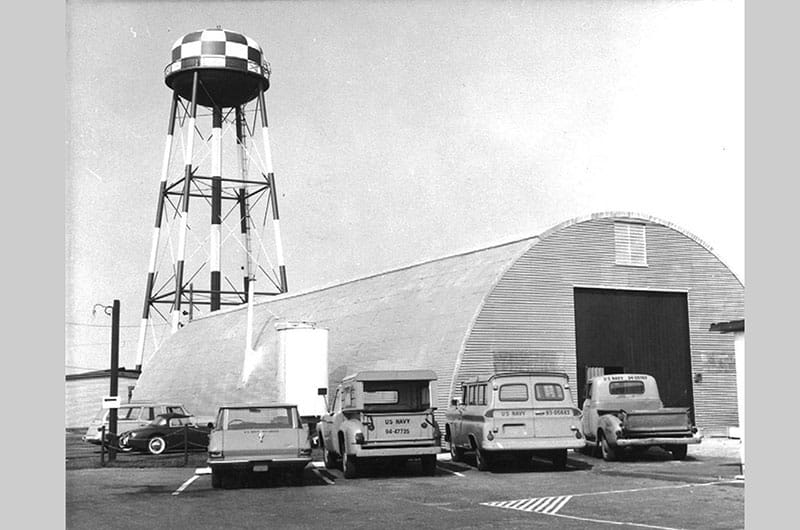~ by Amy Jenness, author of On This Day in Nantucket History, available at Mitchell’s Book Corner ~
On September 1, 1963 President John F. Kennedy and his family went for a cruise on the yacht Honey Fitz and briefly visited Nantucket for a short time. The president and Jacqueline Kennedy, along with a party of friends, took a day sail across Nantucket Sound from their summer home in Hyannisport, Massachusetts.
Moored in the harbor, neither the president nor the first lady got off the 92-foot yacht, but seven children, including Caroline and John Kennedy Jr., were taken to the Brant Point Coast Guard Station. The outing also included four Secret Service men, a nurse, and the Kennedy dog, a German shepherd named Clipper.
The children climbed the Coast Guard watchtower and were given a tour by the operator there. After wandering around the station grounds for 20 minutes, the party was taken back to the Honey Fitz. In total, the visit lasted 30 minutes but caused a commotion among local boaters who circled around the Honey Fitz in the hopes of seeing the first family.
Although the the John F. Kennedy family summered on Cape Cod, the president’s protectors looked to Nantucket when they decided to build a bomb shelter in 1962. The US Navy built an underground bunker on government land in the Tom Nevers area of Nantucket during the Cold War. In a 1961 speech, President Kennedy recommended that all Americans have access to a fallout shelter and not long after the Cuban Missile Crisis erupted.

President Kennedy had two vacation bomb shelters. A sister bunker was built in 1961 on Peanut Island, near Palm Beach, Florida, where the family spent time in the winter. Kennedy visited the Florida bunker twice while participating in a drill, but it’s unclear if he ever saw the Nantucket shelter. The two shelters were built with well concealed entrances, long tunnels leading to living areas, decontamination showers, and each had a source of fresh water. Each one could hold about 20 people and were stocked with provisions and communications equipment.
Although it was never used, the shelter was intended to protect the president and his family from nuclear fallout should the Russians attack. In addition, Clark Clifford, Kennedy’s Secretary of Defense, owned a summer home on Nantucket at the time.
A few months after his September sailing trip to Nantucket, President Kennedy was assassinated in Texas, and the bomb shelters sat unused. In the late 1960s the Navy used the bunker as a locker room during football games against the Nantucket High School football team. Eventually it was sealed and left to decay, as was the Florida shelter.
The Tom Nevers Navy Base, originally known as the Nantucket Ordance Site, has been a place of military secrecy for much of its history. During World II the Navy took over the Nobadeer Airport and pilots conducted practice bombing missions using island targets in the Sheep Pond, Hummock Pond, and Tom Nevers areas. Built by the Navy, Naval Auxiliary Air Facility Nantucket, as it was called, went into service on September 13, 1943 and consisted of two 4,000 foot runways, five barracks for 100 enlisted men, a mess for both enlisted men and officers, and a hangar. Later, the Navy also added a tower, more hangars, and a fire department. In addition to training Navy pilots, the government’s Tom Nevers property was also used for an experimental rocket training program.
When World War II ended, the Navy returned the Nobadeer property to the town in December of 1945, which operates it to this day as the municipal airport. The Navy kept its Tom Nevers property, and in 1955 installed a top secret submarine listening post there. The post was part of a chain connected to an underwater cable called a hydrophone, which the stretched the length of the United States and Canada and then crossed the ocean to Europe. A similar system was also installed on the west coast.
During the height of the Cold War, Navy personnel lived in Low Beach housing and reported to the Tom Nevers base to listen for Soviet submarine activity in the vicinity. As Cold War tensions eased, the system was reduced down to a few listening posts. The Navy closed the Tom Nevers Navy base in 1975.
The base, which had several buildings, a water tower, and the bomb shelter sat unused until the town bought the property for $1. In 1995 the Nantucket Hunting Association received permission to open the bomb shelter and use it for its headquarters. The association cleaned out the decades of trash and abandoned military supplies and upgraded the infrastructure. Today, geocachers can also visit the bunker while searching for a cache of goodies hidden there.
The Peanut Island bomb shelter was restored in the 1990s and is now open for tours as a museum.


